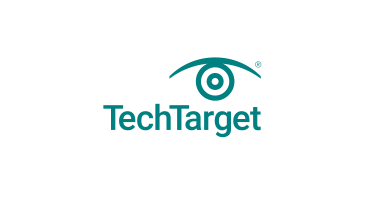
Sam Altman, chief government officer (CEO) of OpenAI and inventor of the AI software program ChatGPT. Photograph: … [+]
OBSERVATIONS FROM THE FINTECH SNARK TANK
If you happen to’ve been to any business conferences this 12 months, you realize that ChatGPT and Generative AI—and synthetic intelligence, generally—dominate the agendas.
An excessive amount of of the content material, nevertheless, is preachy and vacuous—e.g., ”AI goes to be disruptive” or “AI is a sport changer.”
CEOs (and different senior executives for that matter) want—and wish—extra particular viewpoints on what the influence of those new applied sciences might be and on the best way to transfer ahead with them.
So listed below are 5 issues CEOs must find out about ChatGPT and Generative AI:
1) Price Discount Is Not The Purpose of Generative AI
The early focus of Generative AI device and know-how deployment ought to be on productiveness enchancment, particularly course of acceleration.
Estimates of workers cutbacks differ by kind of function and place, and vary from 20% to even 80%. Whereas there are remoted examples of firms fully (or practically fully) changing staff with Generative AI, they’re few and much between—and the outcomes have been lower than spectacular.
The influence of Generative AI on enterprise isn’t workers alternative—it’s the acceleration of human productiveness and creativity. In line with Charles Morris, Microsoft’s Chief Information Scientist for Monetary Companies: “Don’t take into consideration Gen AI as an automation device, however as a co-pilot—people do it, and the co-pilot helps them do it sooner.”
From executing advertising campaigns to growing websites to growing code to create new knowledge fashions, the advantages of those use circumstances for utilizing Generative AI isn’t price discount, it’s decreasing time to market.
2) You Must Consider Giant Language Mannequin Dangers
Though ChatGPT may presently be probably the most well-known giant language mannequin (LLM) on the market (Microsoft’s Gorilla and Fb’s Llama are approaching robust), practically each main know-how vendor has a LLM within the works or has just lately launched one.
By the tip of the last decade, you need to anticipate to be counting on anyplace from 10 to 100 LLMs relying in your business and the scale of what you are promoting. There are two issues you’ll be able to wager on: 1) Tech distributors will declare to be incorporating Generative AI know-how of their choices once they actually don’t, and a couple of) Tech distributors received’t inform you what the weaknesses and limitations of their LLMs (in the event that they actually have one) are.
Consequently, firms might want to consider the strengths, weaknesses, and dangers of every mannequin themselves. In line with Chris Nichols, Director of Capital Markets at South State Financial institution:
“There are particular requirements that firms ought to apply to every mannequin. Danger teams want to trace these fashions and fee them on their accuracy, potential for bias, safety, transparency, knowledge privateness, audit method/frequency, and moral issues (e.g., infringement of mental property, deep pretend creation, and so forth.).”
3) ChatGPT is to 2023 what Lotus 1-2-3 was to 1983
Bear in mind the spreadsheet Lotus 1-2-3? Though it wasn’t the primary PC-based spreadsheet available on the market, when it was launched in early 1983 it sparked a growth within the adoption of non-public computer systems, and was thought of the “killer app” for PCs.
Lotus 1-2-3 additionally sparked a growth in worker productiveness. It enabled individuals to trace, calculate, and handle numerical knowledge like nothing earlier than it. Few individuals within the working ranks as we speak bear in mind how we (oops—I meant “they”) needed to depend on HP calculators to make calculations after which write stuff down.
Regardless of the massive acquire in productiveness, there have been some points: 1) Customers hardcoded errors in calculations which triggered large issues for some firms; 2) Documentation of the assumptions going into spreadsheets was weak (extra like non-existent), creating a scarcity of transparency; and three) There was a scarcity of consistency and standardization within the design and use of the spreadsheets.
These identical points firms wrestled with 40 years in the past with Lotus 1-2-3 are current as we speak with using ChatGPT and different Generative AI instruments: There’s a reliance on ChatGPT’s usually incorrect output, there’s no documentation (or “paper path”) on using the device, and there’s no consistency in using the device throughout staff in the identical division, not to mention identical firm.
Again in its day, Lotus 1-2-3 spawned quite a lot of plugins that enhanced the spreadsheet’s performance. Equally, lots of of plugins exist already for ChatGPT. In reality, a lot of the facility to generate output like audio, video, programming code, and different types of non-text output comes from these plugins, not ChatGPT itself.
4) Information High quality Makes or Breaks Generative AI Efforts
Consultants have been urging you to get your inside knowledge home to ensure that years, and if you begin utilizing Generative AI instruments you’ll see how effectively you’ve carried out. The adage “rubbish in, rubbish out” was tailored for Generative AI.
For open supply LLMs that use public Web knowledge, you’ve bought to be very cautious of knowledge high quality. Whereas the Web is an information gold mine, it’s a gold mine sitting in the midst of an information landfill. Stick your hand in for some knowledge, and also you received’t be certain when you’ve bought a gold nugget or a handful of rubbish.
Corporations have wrestled—for many years, now— with giving their staff entry to the information they should make choices and do their job. A part of the problem is having instruments that entry the information, and getting staff skilled and on top of things on them.
Generative AI instruments assist to summary away a few of the points with utilizing knowledge entry and reporting software program purposes. That’s a giant profit (and one motive why these new instruments assist to speed up human efficiency).
What’s left, although, is the standard of the information.
Paradoxically, nevertheless, you could cease speaking about “knowledge”—generically, that’s. As a substitute, consider the standard, availability, and accessibility of particular forms of knowledge, for instance, buyer knowledge, buyer interplay knowledge, transaction knowledge, monetary efficiency knowledge, operational efficiency knowledge, and so forth.
Every considered one of all these knowledge is fodder for Generative AI instruments.
5) Generative AI Requires New Behaviors
You may’t ban using Generative AI instruments. What you’ll be able to—and may—do is to ascertain tips for his or her use. For instance, require staff to: 1) Doc the prompts they use to generate outcomes; 2) Proofread Generative AI output (and show that they did); and three) Adhere to inside doc tips that embrace using key phrases, clear headings, graphics with alt tags, quick sentences, and formatting necessities.
That’s a tall order, however in response to South State Financial institution’s Nichols, “poorly structured paperwork trigger the majority of Generative AI inaccuracies.”
Administration’s focus will change over the remainder of the last decade, as effectively.
Companies have spent the previous 10 years on a “digital transformation” journey, the place the main target has been on digitizing excessive quantity transaction processes like account opening and buyer help.
That focus is altering—increasing could be a greater phrase—to enhancing the productiveness of information staff within the group—IT, authorized, advertising, and so forth.
Within the quick time period, you’d be loopy to belief Generative AI instruments to run the corporate with out human intervention and oversight. There’s an excessive amount of unhealthy knowledge resulting in too many “hallucinations.”
In the long term, Generative AI might be “disruptive” and a “a sport changer.” CEOs should be proactive and take large steps to make sure these disruptions and adjustments are constructive for his or her organizations.


















